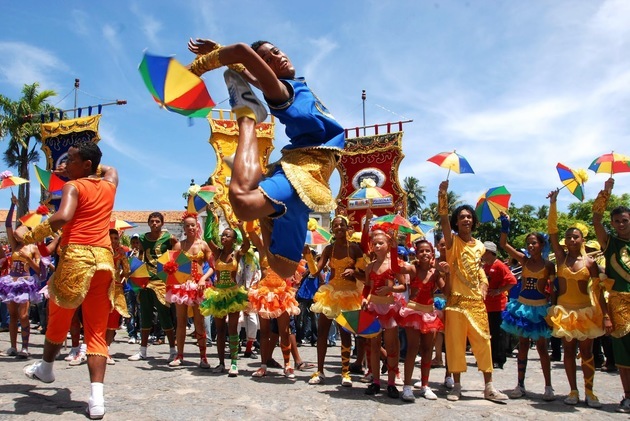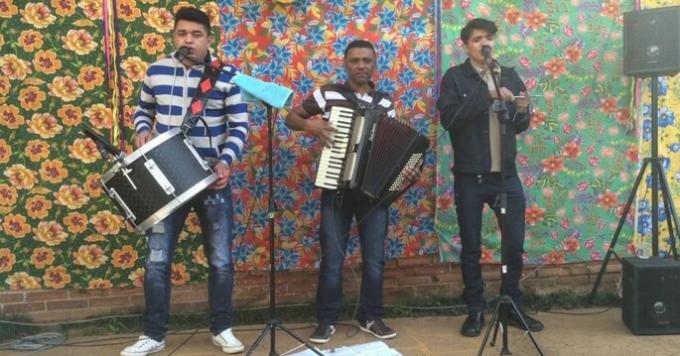frevo is a folk dance typical of the street carnival in Brazil.
It is one of the main traditional Brazilian dances and one of the best known cultural manifestations in the northeast region from the country. It deserves to be highlighted in the Pernambuco carnival, especially in the cities of Olinda and Recife.
This popular dance was recognized as an Intangible Cultural Heritage of Humanity by the National Historical and Artistic Heritage Institute (IPHAN) in 2007.
In 2012, frevo was included in the Representative List of the Intangible Cultural Heritage of Humanity by the United Nations (Unesco).

Origin and History of Frevo
Frevo originated in the 19th century in the city of Recife, Pernambuco. It was a result of the rivalry between the military bands and the slaves who had become free.
The word frevo appears as a corruption of the verb to boil ("frever), because frevo is a frenetic dance, with a very fast pace.

The historical context in which this cultural expression emerged was equally frenzied politically and socially. There was post-abolitionism, while a new working class emerged.
Due to its great cultural value, February 9th is celebrated the Frevo day.
Frevo Features
- presence of music and dance;
- music played by wind instruments;
- fast pace;
- acrobatic movements;
- insertion of elements from other folk dances;
- insertion of capoeira elements;
- colorful costumes and the use of small parasols.

Frevo is characterized by being a accelerated march to the sound of a band that follows the style of the carnival blocks. It incorporates elements from other dances, such as maxixe, polka and even the capoeira.
The frevo orchestra is called Fanfare. The music performed during the dance, in turn, is also called frevo.
There is not just one type of frevo. The most common is not sung, but only performed by wind and percussion instruments.
You musical instruments most used are the trombone, the trumpet, the saxophone and the tuba.
One of the most striking features is the use of colored umbrellas, an object that plays an important role in dance.
They aid in choreography by helping dancers achieve balance when performing acrobatic steps. Furthermore, they bring a special color to the dance.
The dancers, as the frevo dancers are called, wear very colorful clothes too.
Types of Frevo
There are three types of frevo, the most traditional being street frevo.
- Street Frevo: it is not sung but performed to the rhythm of musical instruments. It's the dancing frevo.
- Frevo-song: this is the orchestrated frevo, which has a slower rhythm.
- Block Frevo: is sung, resembling a carnival march.
Paço do Frevo

In 2014 the Paço do Frevo, in Recife.
It is a place that brings together the history of this cultural expression, as well as offering training related to frevo.
The objective is to value and promote the art that comprises the areas of dance and music that are part of Brazilian folklore.
Don't stop here, get to know other folkloric manifestations as well:
- folk dances
- Maracatu
- Carnival
- Boom my ox
- Stamp
- Gang
- congada
- Kings' Folia
- Catira
- Lining
- Samba de Roda
- dance history
- Cultural heritage



